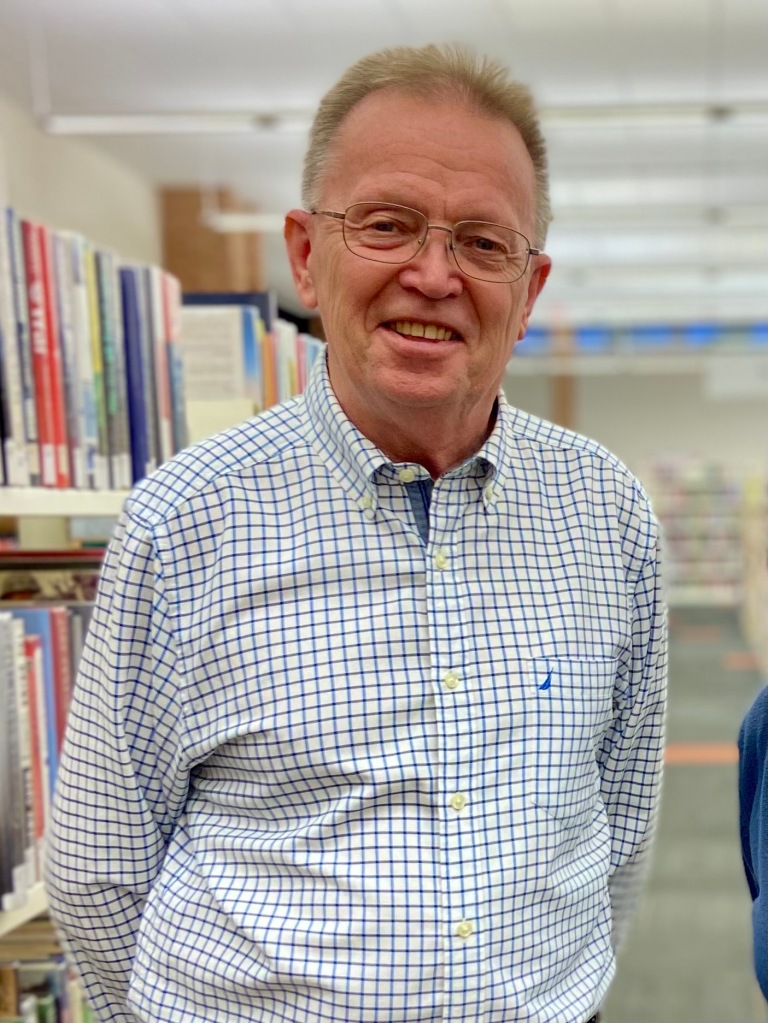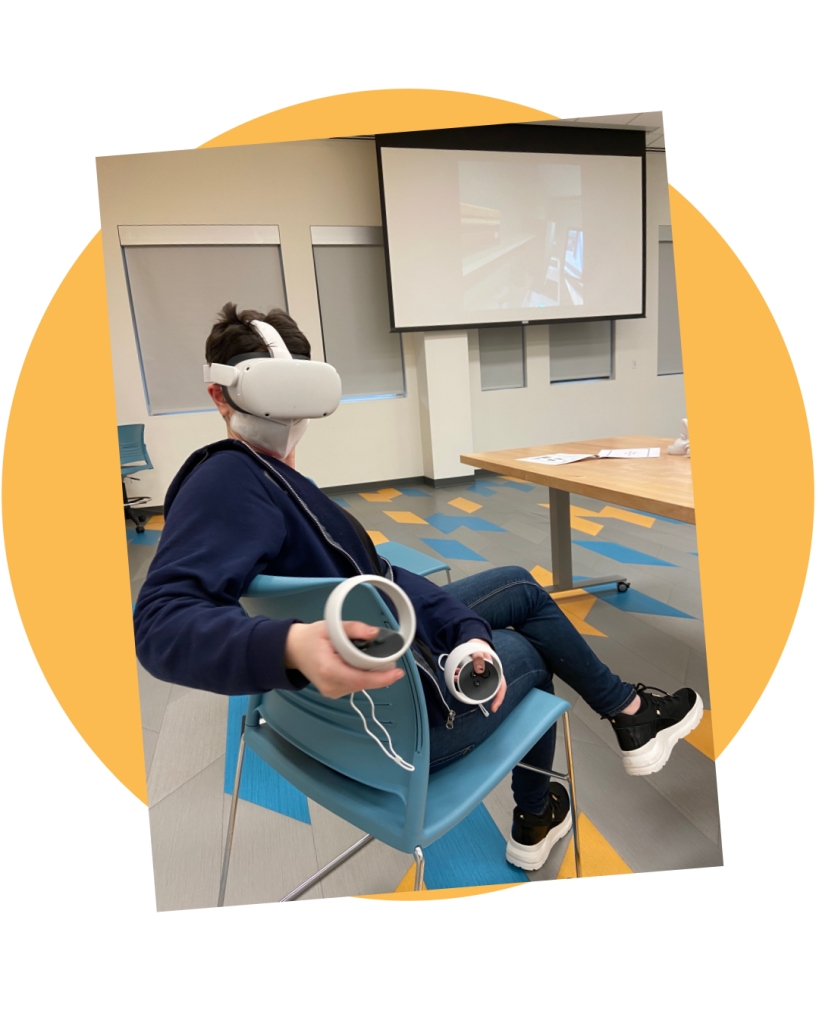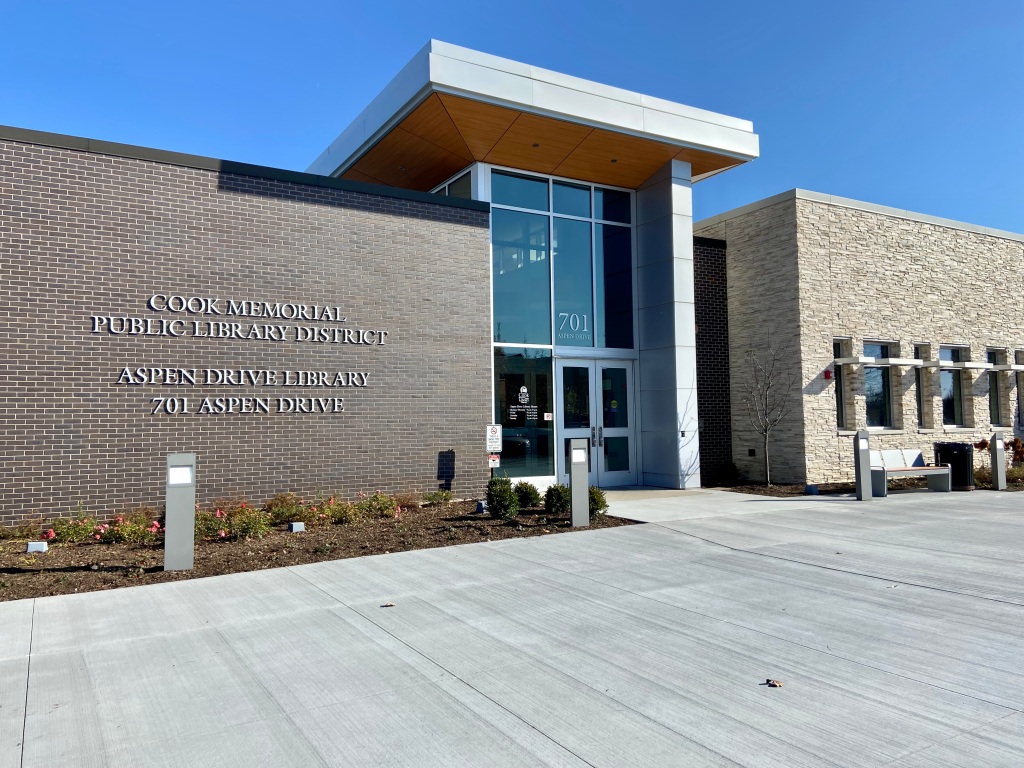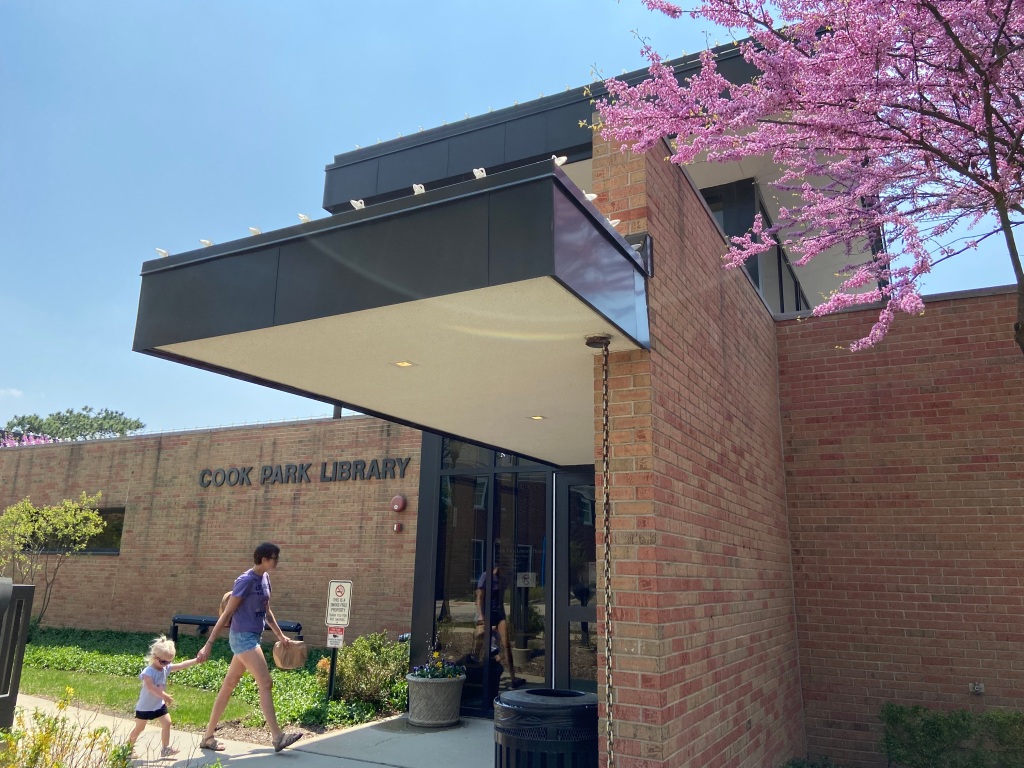5 Questions with Reference Librarians Glenn & Mary
Before MapQuest, Google Images, and TikTok, libraries had a lock on information. If you had a question, needed to do some research, or get directions, you called or visited your local branch. Reference Librarians Glenn Gotrik and Mary Andrew remember that time well. They have 42 and 41 years of library experience, respectively, and have seen it all! They sat down with our communications coordinator to chat about how libraries have changed — and how they haven’t.


Librarians Glenn Gotrik (left) and Mary Andrew (right).
How long have you been working in libraries? What type of work did you do?
Glenn: I have been a librarian for 42 years in total, in the United States and in Norway. I’ve been at Cook Memorial for 35 years and have worked in every department except for the circulation department. I even drove the Bookmobile at one point!
Mary: When I was in library school, I worked in the Wisconsin State Law Library in their periodicals department. That is when I knew for sure I wanted to work in public libraries! Before working at Cook Memorial, I was at a different suburban public library where I was the Adult Services Librarian. That meant I did EVERYTHING that had to do with adults. I ordered the books (both Fiction and Nonfiction), LP records, and VHS tapes. Then I cataloged all the material and filed all the cards in the card catalog. I did all the coordinating of adult programming. The Adult Reference Desk WAS my desk and I was the only adult services librarian. In a pinch, I did the payroll one time and unclogged a few toilets too!
IMAGE: University of Wisconsin Law Library, Quarles & Brady Reading Room

Technology has evolved so much in the past 40 years that it is hard to imagine finding information without it. Do you think the use of technology has changed the role of a library or librarian?

Glenn: No, we’re still doing the same thing: connecting people to information, to what they need. Before the Internet, we were like Sherlock Holmes. We would find something in a book that would lead to another book that would lead to a magazine. That was fun! We were unraveling something. Now, we still find information but it’s just a different process. People keep saying that libraries are going to go under and disappear. No, we won’t disappear. We reinvent ourselves to meet the changing needs of the community.
Mary: No! I can describe what libraries do in one word: access. If you can afford to buy a book — or not; if you can afford a computer — or not; we’re here to even the playing field and give everyone equitable access. That need will always be there as long as you have to pay for materials and services.
What has changed the most during your library career? Do you miss anything?
Mary: There used to be an artist who would come in all the time for very specific images as references for his art. I would have to look in our huge collection of art and photography books. Now, it’s all online with Google Images. People can do it themselves.
We also used to do a lot more calling around to other libraries to get information we didn’t physically have in our collection, like telephone books.
Glenn: Each library in the North Suburban Chicago area had a state; we had all the phone books for Michigan. It was a way for libraries to help each other because no one could afford to have all 50 states.
Mary: Niles had Wisconsin!
Glenn: I miss the guys from area bars who would call us to settle bets. “Who had the most runs in ’58?” Now they can just whip out their phones and look it up. Before, they’d have to call us.
Mary: I remember that. We would use the Baseball Encyclopedia! There was one guy who called often and it seemed like he always lost the bet. You could hear other people in the bar yelling out more questions to ask the librarians. That was so much fun.

I’m thinking about the vast amount of space all this took up…

Glenn: And also the manpower! I used to have an assistant whose sole job was to check in magazines and newspapers, cut out articles, and then update the vertical file for all our 250 magazines.
Mary: It used to be ALL books, newspapers, and magazines — almanacs, dictionaries, extensive files of newspaper and magazine clippings. The Readers’ Guide* came out monthly, then InfoTrac** came along. Once a month, we got a new InfoTrac reel with indexing for magazines, and every week there would be a basket for filing. Our physical reference collection was HUGE. Now it’s all digitized in our powerful databases.
TOP IMAGE: An InfoTrac reel cartridge.
MIDDLE: Mary holding a copy of the Readers’ Guide to Periodical Literature, 1925-1928.
BOTTOM: A close-up of periodical topics.
*The Reader’s Guide to Periodical Literature is a physical reference guide for recently published periodical magazines and scholarly journals, organized alphabetically by topic. It has been published regularly since 1901 and Cook Memorial Library received a new edition each month.
**InfoTrac computer software debuted in the mid-1980s. It stored a wealth of periodical subject headings on LaserDiscs — later CD-ROMs — which were used to quickly find related articles. The software then pointed the user to the appropriate microfilm frame to read the full article.
Is there something you’re glad has been left in the past?
Glenn: The old card catalog. You can do much more powerful searches with the online catalog.
Mary: I am so glad many of our clerical functions have gone electronic. We used to fill out so many forms: a form for each book we ordered, a form for each hold we placed, a form for each InterLibrary Loan request… Also, the online catalog is a vast improvement over the old card catalog!
IMAGE: An old card catalog at Cook Park Library from the 1960s/1970s.

What do you think the future holds for libraries?

Mary: I believe CMPLD will continue to be a source of information, enrichment, and community. No matter how much one makes, public libraries ensure that materials, information, experiences, and the Internet are available to all. The future of Cook and public libraries will be driven by understanding patron needs and interests, and being willing to always adjust.
Glenn: I honestly don’t worry about libraries not surviving into the future, as long as we change as society changes. Most of the changes will be dictated by technology.
I also see CMPLD becoming more of a community center for the public to use for meetings, programs, events, and the like. If we keep up with the needs of the community, we will always be there to help them.
IMAGE: A young patron uses the Oculus virtual reality headset at Aspen Drive Library.
More

Vernon Hills, IL

Libertyville, IL
Discover more from Cook Memorial Public Library District
Subscribe to get the latest posts sent to your email.
Categories: Library News
